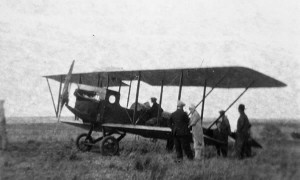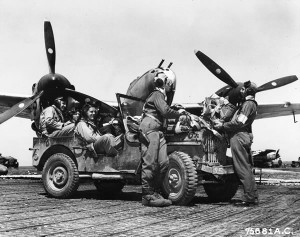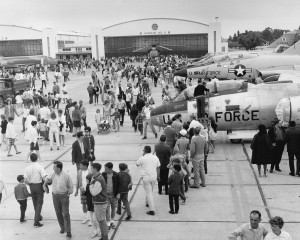
Hamilton Air Field: Early Flight
A Chronological History Hamilton Airfield
|
The Beginning:
|
|
In the late 1920’s and early 1930’s the Army was looking at various sites for a new air field on the west coast. A number of cities were competing for the new location. A new base would bring jobs and money to the depression –strapped local economies.A number of factors were involved in the selection of Marin County as the new site for the base, including, the temperate weather, clear visibility and the fact that 937 acres, known then as Marin Meadows, was sold to the government for $1. The base was built in 3 years for 5 million dollars. |
| 1931 |
Captain Howard Nurse, an engineer for the quartermaster Generals Office was responsible for base design. Nurse envisioned a base as a planned community. |
|
Construction began with two nurseries to grow Bermuda grass necessary for the grass runways and 9 hangars to house 200 aircraft |
| March 1932 |
The deed to Marin Meadows officially passed to the Department of the Army. |
| 1933 |
At the peak of construction 800 people were employed at the base. |
| 1934 |
Majority of the base construction completed |
| May 12, 1935 |
Hamiton Army Airfield officially dedicated. Brigadier General Hap Arnold said Hamilton was the “most modern, best equipped up-to-date airfield in the United States.” |
|
Hamilton was named in honor of Lieutenant Lloyd Hamilton. An American Aviator who died in combat flying his Sopwith Camel for the British in WW1. |
|
First airmen began to arrive at Hamilton |
| 1935-1941 |
Hamilton was the foundation of West Coast Air Defense. |

Hamilton Air Field: 94th FS circa 1943
|
The War Years:
|
| 1941 |
On December 6th a Bomber Squadron of B-17’s, leaving Hamilton for Pearl Harbor, arrived the morning of December 7th in the middle of the Japanese attack. |
| 1943 |
Woman’s Air force Service Pilots (WASPS) were stationed at Hamilton. Their duties included ferrying Army personnel up and down the coast, towing targets, radio control work, surveying weather conditions and equipment testing. |
|
Hamilton was a major facility for the Air Transport Command. The ATC flew planes, people and war material on an around the clock basis to Pacific War zones. |
|
Hamilton served as main receiving base for war wounded Airmen, Army and Navy personnel from the Pacific Theatre. |
| 1945 |
On February 24th, 88 recently freed Army nurses, who had been imprisoned by the Japanese for 3 years after the fall of the Philippines, arrived at Hamilton. They became known as the Angels of Bataan. In April, delegates from around the world arrived in San Francisco to sign the charter of the newly created United Nations. Many delegates arrived and departed from Hamilton Field. President Harry Truman attended the conference, toured the base and visited wounded military personnel in the base hospital. |

Hamilton Field 1960’s
|
Post War WWII Years
|
| 1947 |
The U.S Air Force was created as a separate branch of the Armed Forces and Hamilton Field became Hamilton Air Force Base. |
| 1946-1950 |
During the Cold War years, Hamilton was the hub of the Western Regional Defense Command. Its mission was the tracking, reconnaissance and rescue services in the North Pacific. |
| 1950-1953 |
During the Korean War, many of the American advanced fighter jets and their crews came from Hamilton. |
|
Decommissioning
|
| 1974 |
Hamilton was reclassified as “excess property.” It was the first of 80 bases targeted for closure in the 1970’s. |
| 1976 |
Agreement was reached to close Hamilton Air Force Base as part of the post –Vietnam War drawdown of the military. |
|
The US Coast Guard has maintained a presence at the facility to present day. |
| 1980-1983 |
The State Department used Hamilton as temporary housing for thousands of Boat People fleeing violence in Vietnam, Cambodia and Laos. |
| 1987-1990 |
For three years, local organizations sponsored the Wings of Victory Airshows. |
| 2010 |
The Hamilton Field History Museum (HFHM) opened in May on the 75th anniversary of the dedication of Hamilton Air Field in 1935. The museum is housed in the building that was originally the base firehouse. |


